Commenti / Domande (14)
![]() Ferabird ha scritto:
Ferabird ha scritto:
Is there any chance these could be posted with row by row instruction at some point? I love your designs, but the charts are super hard for a lot of folks to understand to the point that it seems like they're sort of notorious for it. Is there any chance you might consider coming back around and translating them to text? I'm still new to knitting and thought a shawl would be great practice but I'm so lost at the first stripe!
28.12.2022 - 18:57DROPS Design ha risposto:
Dear Ferabird, there are only diagrams to this pattern, but this lesson explains how to read diagram and should help you understanding how to work them. Happy knitting!
02.01.2023 - 11:29
![]() Anita ha scritto:
Anita ha scritto:
Det er ikke merke for Forkortede pinner i diagram: . A.3b .
04.08.2022 - 23:21DROPS Design ha risposto:
Hej Anita, vi skal høre med design om vi kan få dem med i diagrammet - tak for info :)
05.08.2022 - 12:11
![]() Anita ha scritto:
Anita ha scritto:
Står ikke merke for Forkortede pinner i diagram A.3b .
04.08.2022 - 23:18
![]() Emma ha scritto:
Emma ha scritto:
Ik heb een vraag over de verkorte toeren. Als ik het goed begrijp brei je bij de eerste verkorte toer van de 27 steken die je dan hebt de twee kantsteken en daarna drie steken waarnaar je het werk keert en terug breit. Klopt het dan dat je bij de volgende verkorte toer er vijf breit, daarna 7 etc?
27.10.2019 - 21:01DROPS Design ha risposto:
Dag Emma,
Dat klopt inderdaad. Je breit verkorte toeren over de buitenste herhaling van het telpatroon en over de 2 kantsteken. Als het telpatroon op dat moment 3 steken heeft, brei je dus verkorte toeren over 5 steken in totaal. Omdat het telpatroon meerdert in aantal steken, zitten er dus steeds meer steken in de verkorte toeren. Op de eerstvolgende verkorte toer heb je inderdaad 7 steken in totaal.
29.10.2019 - 10:04
![]() Matteo ha scritto:
Matteo ha scritto:
Negli schemi A la gettava va ancora fatta ritorta? Continuando a farla ritorta sparisce il motivo è non viene come la foto
14.08.2019 - 00:30DROPS Design ha risposto:
Buongiorno Matteo. Le maglie gettate negli schemi non vengono lavorate ritorte. Deve rimanere un buco. Buon lavoro!
14.08.2019 - 07:38
![]() Antal Adrien ha scritto:
Antal Adrien ha scritto:
Hiba a leírásban: "Most folyt LUSTAKÖTÉSSEL, lásd a fenti magyarázatot és szap következő módon: Szap a 3. és a 6. jelölő után, valamint az 1. és a 4. jelölő előtt". Helyesen: "Most folyt LUSTAKÖTÉSSEL, lásd a fenti magyarázatot és szap következő módon: Szap az 1. és a 2. jelölő után, valamint az 3. és a 4. jelölő előtt"
28.04.2019 - 19:19
![]() Maud ha scritto:
Maud ha scritto:
Bonjour, j’ai du mal à comprendre les rangs raccourcis. Vous parlez de 6 rangs mais dans les explications, il y en a 5. Pourrez-vous m’aider ? (1 et : 2 enfin puis les 24 m end ? Tourne Puis 2 rg : 24 m env , 2 end. 3 rg : 2 end, 24 m avec les jetés du diag A1 puis 2 end. 4 rg : 2 end, 24 m env puis je suis bloquée ??? Il est mis rang retour c’est à dire ? Merci d’avance.
07.10.2018 - 23:34DROPS Design ha risposto:
Bonjour Maud, on tricote 5 rangs au total pour les rangs raccourcis et on répète ces 5 rangs tous les 6 rangs (cf diagrammes). Les rangs raccourcis se tricotent ainsi: Rg1: 2 m point mousse, en jersey sur les mailles du 1er motif de A.1 (ce nombre de m va augmenter au fur et à mesure, mais on en a 3 la 1ère fois), tournez. Rg2: tricotez le rang retour (= sur l'envers). Rg3: tricotez toutes les mailles en suivant les diagrammes (le rang avec le rond). Rg4: (sur l'envers): 2 m point mousse, le 1er A.1 en jersey. tournez. Rg5: tricotez les m du rang 3 sur l'endroit. Au rang suivant, tricotez le rang suivant du diagramme (celui après le rond = sur l'envers). Bon tricot!
08.10.2018 - 09:46
![]() Do ha scritto:
Do ha scritto:
Czy w schemacie nie ma błędu? Chodzi mi o rzędy, które na prawej stronie mają być oczkami lewymi (xxxxxxx). Wydaje mi się, że powinny się powtarzać co każde 6 rzędów i tak to wygląda na zdjęciu gotowego szalu. Sama robiąc szal najpierw robiłam dokładnie wg wzoru, ale potem zdecydowałam się spruć i robić tak, że lewe rzędy powtarzałam regularnie - wyglądało to zdecydowanie lepiej. Powtarzalność rzędów czyni ten szal pięknym.
19.06.2018 - 11:15DROPS Design ha risposto:
Witamy! Na schemacie są od czasu do czasu rzędy tylko oczek lewych. Jest to widoczne na zdjęciu szala. Jeżeli jednak bardziej podoba Ci się w wersji bez oczek lewych, to cieszymy się. Koniecznie zamieść zdjęcie swojego szala w grupie DROPS Workshop na facebooku. Pozdrawiamy!
19.06.2018 - 21:17
![]() Steffi ha scritto:
Steffi ha scritto:
Habe schon gleich bei den ersten Reihen eine Frage... Sie betrifft die verkürzten Reihen. Werden diese jeweils pro Rapport gestrickt oder nur jeweils an der Seite ( " beidseitig")? Und laut Muster wird in der dritten Reihe mit Umschlägen zugenommen. Diese werden also dann in der letzten Reihe der verkürzten Reihe eingearbeitet? Oder sind "hin/wenden/zurück/wenden" zusätzliche Reihen?
31.08.2017 - 17:11DROPS Design ha risposto:
Liebe Steffi, die verkürzten Reihen werden glatt re gestrickt (die kommen zusätzlich zum Muster) wie unter VERKÜRZTE REIHEN erklärt: 2 Reihen glatt re über 1 Rapport A.1 mit 2 M Kraus re (= auf die rechte Seite von der Vorderseite gesehen), 1 Hin-Reihe im Muster über alle Maschen, und 2 Reihen glatt re über 1 Rapport A.1 mit 2 M Kraus re (= auf der andere Seite = linke Seite von der VorderSeite gesehen), dann die Rückreihe im Muster über alle M stricken. Viel Spaß beim stricken!
01.09.2017 - 08:34Dell Chan ha scritto:
Question # 1 Short Rows. "Repeat the short rows as shown in diagram = on every 6th row". " o=on this row work SHORT ROWS". On the diagrams A.1, A,2 and A3a, the " o " is on Row 7. When (which row) is the repeat to be done? Question # 2 : " ....working stocking st over all sts in 1st repetition A.1 (=3sts on 1st row in diagram) ..... " Does this means 3 sts or 3 sts x 8 repeats = 24 sts ( ie all the stitches) ? Thank you. DC
24.11.2016 - 18:09DROPS Design ha risposto:
Dear Dell Chan, you repeat the short rows every 6th row, ie work 5 rows as in diagrams and on next row, repeat short row. Short rows are worked over sts in 1st repetition of A.1 only, ie there are 3 sts in A.1 on first row, but then when working A.1 and repeating the short rows there will be more sts (see diagram), work only the sts in first repetition in A.1 for the short rows. Happy knitting!
25.11.2016 - 08:41
Blizzard#blizzardscarf |
|||||||||||||||||||
|
|
|||||||||||||||||||
Scialle DROPS lavorato ai ferri con motivo a ventaglio e strisce, lavorato dall’alto in basso (top down) in ”Puna”.
DROPS 173-23 |
|||||||||||||||||||
|
M LEGACCIO (avanti e indietro): Lavorare tutti i f a dir. 1 “costa” a m legaccio = 2 f dir. MOTIVO: Vedere i diagrammi A.1-A.3. I diagrammi mostrano tutti i f del motivo visti dal diritto del lavoro. STRISCE: Striscia 1: panna Striscia 2: talpa Striscia 3: grigio chiaro Striscia 4: grigio Striscia 5: panna Striscia 6: talpa Striscia 7: grigio chiaro FERRI ACCORCIATI: Lavorare a f accorciati sulle ripetizioni più esterne + le 2 m di vivagno a m legaccio a ogni lato dello scialle. Lavorare come segue dal diritto del lavoro: Lavorare 2 m di vivagno a m legaccio, lavorare a m rasata su tutte le m nella 1° ripetizione di A.1 (= 3 m sul 1° f del diagramma), girare, tirare il filo per evitare buchi e lavorare a m rasata sulle m in A.1, 2 m di vivagno a m legaccio. Girare e lavorare il motivo su tutte le m sul f, girare, lavorare 2 m a m legaccio, m rasata su tutte le m nella 1° ripetizione di A.1, girare, tirare il filo e tornare indietro. Ripetere i ferri accorciati come mostrato nel diagramma = ogni 6 ferri. NOTA: A causa degli aumenti nel motivo lavorare più m quando si lavorano i ferri accorciati. Quando i diagrammi A.3a e A.3b vengono lavorati, lavorare i ferri accorciati su entrambi i diagrammi + le 2 m di vivagno a ogni lato del lavoro. SUGGERIMENTO PER GLI AUMENTI: Aumentare 1 m facendo 1 gettato. Sul f successivo lavorare i gettati a dir ritorto per evitare buchi. SUGGERIMENTO PER LA CHIUSURA: Per evitare un bordo di chiusura tirato, potete usare un ferro di ½ misura più grande. ---------------------------------------------------------- SCIALLE: Lavorato avanti e indietro sui f circolari, dall’alto in basso. Per prima cosa lavorare una sezione a m legaccio fino a quando ci sono abbastanza m per lavorare un motivo. Avviare 7 m con il panna con i f circolari n° 4 mm. Lavorare 1 f dir. Ora lavorare come segue: FERRO 1: 2 m dir, 1 gettato, 1 m dir, 1 gettato, 1 m dir, 1 gettato, 1 m dor, 1 gettato, 2 m dir = 11 m. FERRO 2: Lavorare tutti i f a dir. NOTA: Lavorare i gettati a ritorto per evitare buchi. FERRO 3: 2 m dir, inserire il 1° segnapunti, 1 gettato, 2 m dir, inserire il 1° segnapunti, 1 gettato, 3 m dir, 1 gettato, inserire il 1° segnapunti, 2 m dir, 1 gettato, inserire il 1° segnapunti, 2 m dir = 15 m. FERRO 4: lavorare a dir. Ora continuare a M LEGACCIO – leggere la spiegazione sopra, e aumentare come segue: aumentare dopo il 1° e 2° segnapunti e prime del 3° e 4° segnapunti – LEGGERE IL SUGGERIMENTO PER GLI AUMENTI! Aumentare in questo modo su ogni f dal diritto del lavoro (cioè a f alterni) 3 volte in totale = 27 m. FARE ATTENZIONE ALLA TENSIONE DEL LAVORO! Sul f successivo dal diritto del lavoro, aumentare 1 m = 28 m. Lavorare 1 f. Ora continuare a STRISCE – leggere la spiegazione sopra (cioè continuare con il panna = 1° striscia) e il MOTIVO come segue: lavorare 2 m di vivagno a m legaccio, A.1 (= 3 m sul 1° f del diagramma) 8 volte in larghezza, 2 m di vivagno a m legaccio, ALLO STESSO TEMPO lavorare a FERRI ACCORCIATI – leggere la spiegazione sopra, a ogni lato. NOTA: Ripetere i ferri accorciati come indicato nel diagramma, cioè ogni 6 f. Quando A.1 è stato lavorato in verticale, ci sono 236 m sul f. Continuare con A.2 su ogni ripetizione di A.1. Quando A.2 è stato lavorato in verticale, ci sono 380 m suo f. Ora lavorare come segue: 2 m di vivagno a m legaccio, * A.3a (= 23 m), A.3b (= 24 m) *, ripetere *-* fino a quando rimangono 2 m (= 8 volte), 2 m di vivagno a m legaccio. Quando A.3a e A.3b sono stati lavorati in verticale, ci sono 556 m sul f. Lavorare 1 costa a m legaccio e intrecciare – LEGGERE IL SUGGERIMENTO PER LA CHIUSURA. MESSA IN FORMA: Mettere il capo in acqua tiepida fino a quando è completamente bagnato. Eliminare l’acqua delicatamente – non strizzare. Poi avvolgere il capo in un asciugamano e premerlo per far uscire più acqua – il capo ora sarà solo umido. Metterlo su un tappeto o materasso – tirarlo delicatamente per portarlo alle misure indicate in alto. Lasciare asciugare. Ripetere il processo quando lo scialle viene lavato. |
|||||||||||||||||||
Spiegazioni del diagramma |
|||||||||||||||||||
|
|||||||||||||||||||
 |
|||||||||||||||||||
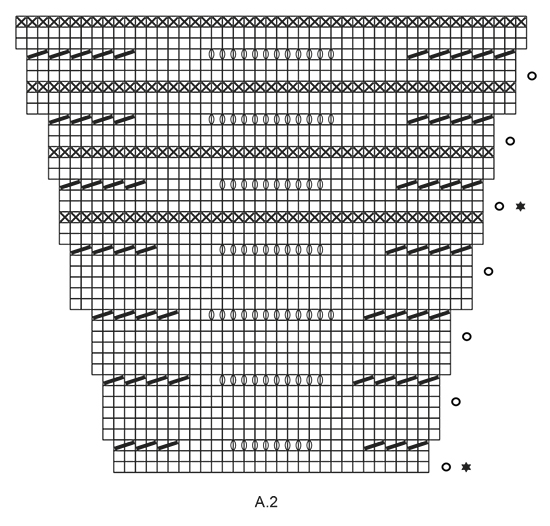 |
|||||||||||||||||||
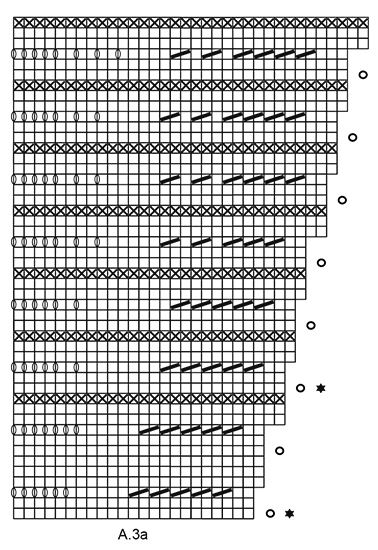 |
|||||||||||||||||||
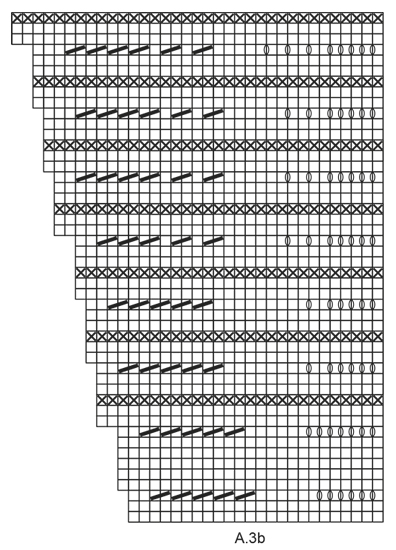 |
|||||||||||||||||||
Avete terminato questo modello?Allora taggate le vostre foto con #dropspattern #blizzardscarf o inviatele alla #dropsfan gallery. Avete bisogno di aiuto con questo modello?Troverete 20 video tutorial, una sezione per i commenti/domande e molto altro guardando il modello su www.garnstudio.com © 1982-2025 DROPS Design A/S. Ci riserviamo tutti i diritti. Questo documento, compreso tutte le sue sotto-sezioni, è protetto dalle leggi sul copyright. Potete leggere quello che potete fare con i nostri modelli alla fine di ogni modello sul nostro sito. |
|||||||||||||||||||









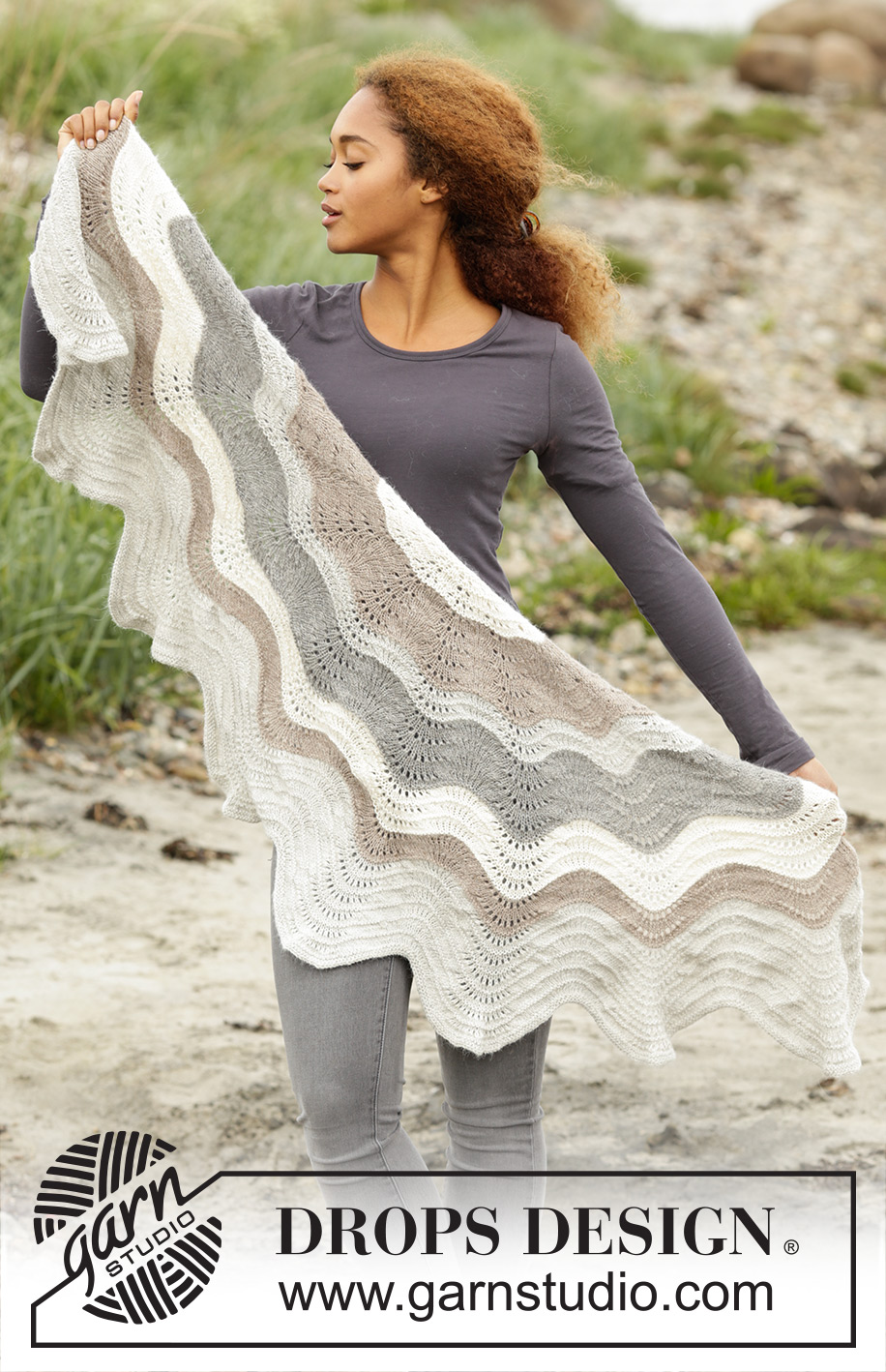


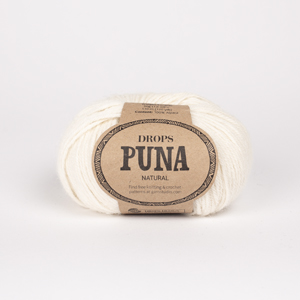
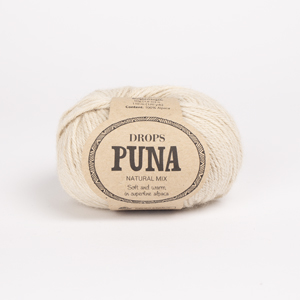










































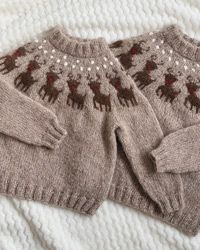

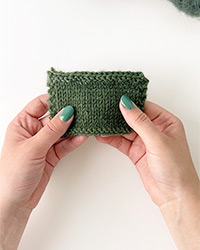

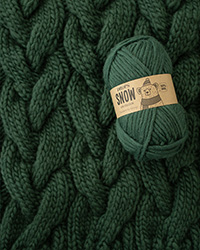
Lasciare un commento sul modello DROPS 173-23
Noi saremmo felici di ricevere i tuoi commenti e opinioni su questo modello!
Se vuoi fare una domanda, fai per favore attenzione a selezionare la categoria corretta nella casella qui sotto per velocizzare il processo di risposta. I campi richiesti sono indicati da *.